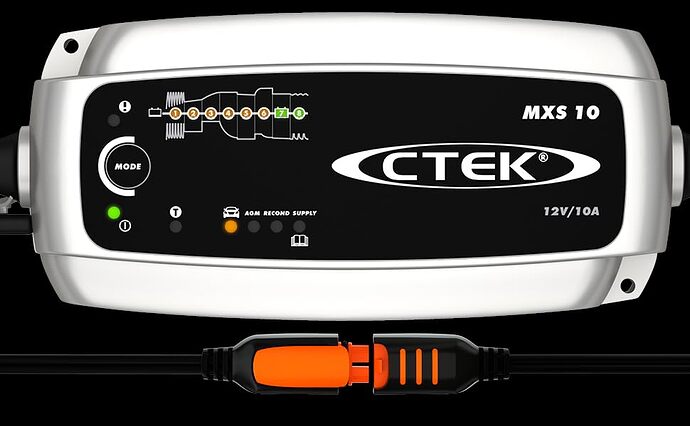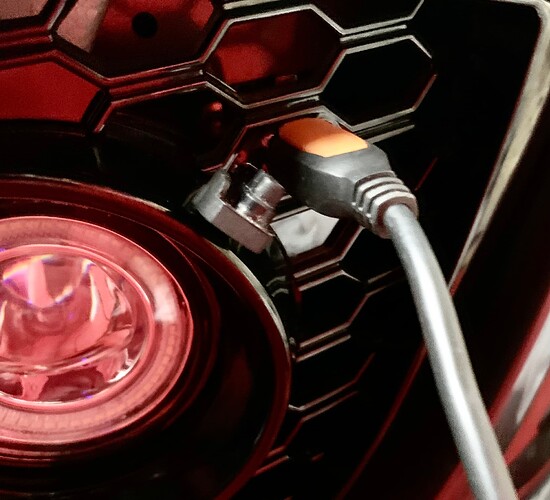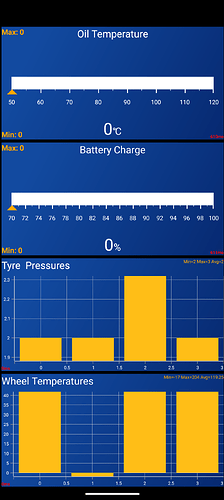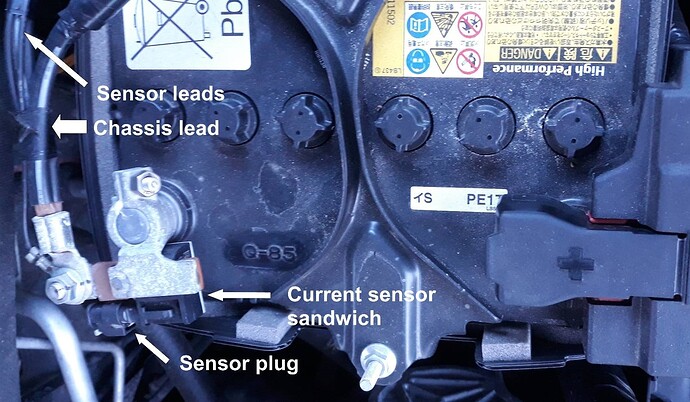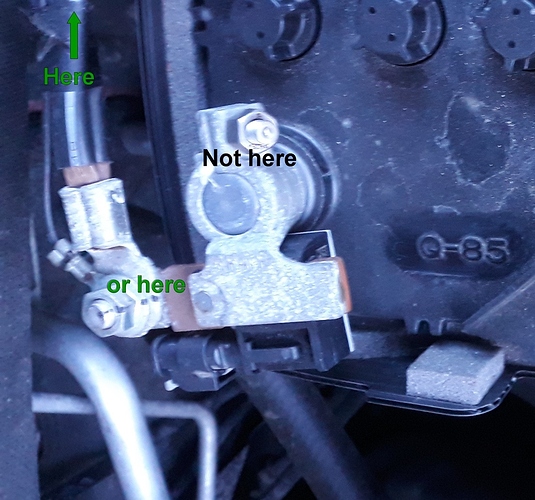I have a 2024 MX-5 RF and looking to buy this CTEK charger. It has I-Stop and E-loop system. I’m completely confused as to whether the factory battery is an AGM type for deep cycle stop/start or a standard lead acid job as the Mazda Tech guy who walked me through the car on purchase told me it uses the engine compression to assist restart at traffic lights for the I-Stop system so doesn’t need the expensive special AGM type battery. But Halfords etc shows the EFB option for this replacement part as well as the standard calcium and silver options. AI tells me the same. Is the factory battery AGM or not? Even the user manual gives no clue. The battery has the 6 separate level inspection/filler cross head plastic caps if that helps.
I’m sure someone on here said it isn’t AGM, and wasn’t there a poster from someone who said ctek said you can use the ‘normal’ mode even if it was, just takes longer?
For what it’s worth, I had a car with a EFB, and I just used the normal mode on the ctek (MXS 5.0) and it was fine. My up! gti got either an EFB or AGM. I’m not sure. Any labeling on the battery is hidden, and forums seems to guess too (but it is one of them). Anyway, I’ve used normal mode again and, again no issues.
The factory fitted battery is an EFB type on MX-5 with i-Stop.
Sorry, I don’t know about the aftermarket options. Yes, I’d charge an EFB battery the same as a conventional flooded battery unless the charger instructions state otherwise.
I’ll see if there’s any clues on the battery markings when I check next time, but I have a feeling it’s identical to the photo’s [Chris007] posted here so I’m guessing it’s a standard maintenance free or EFB type as suggested. It’s a surprisingly small battery for a 2 liter! Thanks all ![]()
Go easy on the ‘recondition’ mode. Most car batteries don’t need it because they are used regularly and rarely discharged. MX-5’s of course can punish batteries a bit more, if they are used infrequently, and they also have small batteries, so reconditioning might be worth trying if it’s been flat.
The CTEKs have gone up a lot. I have just bought another charger and went for the Victron IP65 12/10, 10 Amp with bluetooth which I’m really happy with. It can be found (just) for about £100 delivered. The 10 Amp CTEK is about £160 and I don’t think it’s worth that.
My CTEK 3.8XS from 2016 (£48 then) is still going but I wanted something a bit faster on hand. Slower is usually better for the battery when there’s no rush and the Victron can also charge at maximum 3A when that’s the case.
I’m impressed with the Victron because I can see on the app how many Ah have gone in. It also has a ‘storage’ mode for when it is left connected which uses 13.2V rather than the normal float voltage of 13.8V. It can also be used as a power supply for maintaining voltage when the battery is off the car.
The Yuasa 7053 is an EFB battery which is the one to use for stop/start.
Yes, I think that’s the best YUASA replacement/equivalent and should be charged in ‘normal’ mode based on what I’m hearing for CTEK MXS 5.0.
I been using CTEK MXS 10 for 5+ years now with out any Problems made a holder in the front grill so I do not have to pop the bonnet the CTEK adaptor sends updates to my phone so I can remote switch on the trickle charger when the batt level drops …why do this well I am lazy ![]()
thanks for taking the time to look
I jut ordered the CTEK MXS 3.8 as I didn’t need the RECON or AGM mode, although the manual I downloaded says you can use the Cold Weather Program to charge an AGM battery if needed, it just raises the maximum charging voltage to 14.7 volts. What’s the ‘SUPPLY’ mode used for on your MXS 10?
I have a 2023 MY car with e-loop and i-stop. Use of the MSX5 (and maybe other chargers?) with the battery in the car confuses the stop start system (fails to operate) and the car gets the resulting battery State Of Charge (SOC) through the odb2 port wrong. Others have experienced this.
For me, disconnecting the negative terminal and sensor for 15min, reconnecting the terminal and them the sensor seemed to work.
What this means is using the/a charger is more of a faff.
It seems to be very sensitive to the voltage drop when left standing. From what I gather, if it determines the SOC falls below 75%, I’m guessing around 12.4 Volts or less, then it raises those 2 alerts, which is what I recently experienced after leaving the car parked for about 3 weeks without starting (The holidays crept up on me!). The measured non charging voltage was under 12.1 Volts at this stage.
But you seem to be saying that even when the battery is reasonably charged already and the CTEK is then applied, it still causes these alert issues? It’s actually coming up on the dash or only via diagnostics memory using the ODB2 port?
Not checked what the voltage was before connecting the charger.
I use an Android app (Car Scanner ELM OBD2) to show various odb2 stats like tire pressures/temperatures, oil temp, and battery SOC. It was indeed stuck below 75% SOC even after the MSX5 charger had gone into maintenance mode (and then disconnected) so the battery was fully charged…
No warnings on the dash.
I have a feeling it’s just keeping a history in memory of the past SOC low alerts. Don’t you have to clear the memory of warnings after the charge issue is resolved? That sounds like a cool OBD2 gadget, I need to gets me one…but oh no, not another thing to buy for my pampered MX-5! LOL
It’s used to provide a low current 12V supply to the car (for example, when you are changing the battery on a car where you don’t want the radio to lose its settings).
I didn’t get any warnings to clear. Only symptoms were stop start not working and the SOC measured via the odb2 port. Stop start started working again as soon as disconnected/reconnected the battery…
Hmm, adding an external charger to a battery which normally uses a clever internal charge counting system is a recipe for potential confusion.
This is a pic of my Mazda3 battery connections BEFORE I added the charger lead during lockdown
Consider the ways in which the battery loses charge:
- self discharge, where the monitoring system knows nothing except duration and cell voltage
- the car’s dark current, which is so small it is down in the digital quantising noise when looking at the resolution of the charge counter, and therefore not to be trusted long term.
This pic suggests how we are recommended to connect a negative external charger lead.
Bearing all this in mind, for my iStop Mazda3 I decided to connect the charger-connector hard-wired lead to the two battery terminals (ie the Negative wire to “Not here” in my pic!), and thereby eliminate the sensor module which would have been in circuit if using the chassis for the negative. I don’t recommend it as this goes against the recommendations published everywhere.
However, during lockdown that car stood for several months unused apart from two short essential trips, one of which was MOT etc. Before each of those trips I gave the car an overnight charge with the NOCO, battery still connected in the car. iStop then worked as normal, and no error messages.
Subsequently I’ve only charged the battery after the car was not being used for several weeks each time we were away in MX-5. This Mazda3 is a 2016 car normally used as a DD and it’s still on the original battery.
That makes perfect sense eliminating the sensing module from the charge path. I never considered that. But I can’t see how or why they would recommend connecting the permanent negative charge lead after the sensor module where you show green “Here or here” when the CTEK manual clearly shows the crocodile clip option being clipped directly over the battery posts where you show “Not here”. Which publications are actually recommending the after sensor module connection?
Yes, that is disappointing. I’ve also read similar stuff on here like that. Pity, my ND1, touch wood, gives no grief with a ctek.
I’ve been tempted over the years to ‘upgrade’, but stuff like this is a real turn off. That and, going by the miata forum (and someone on here, even on a 1.5) the reemergence of the grenading gearboxes on ‘some’ '22 onwards cars.
